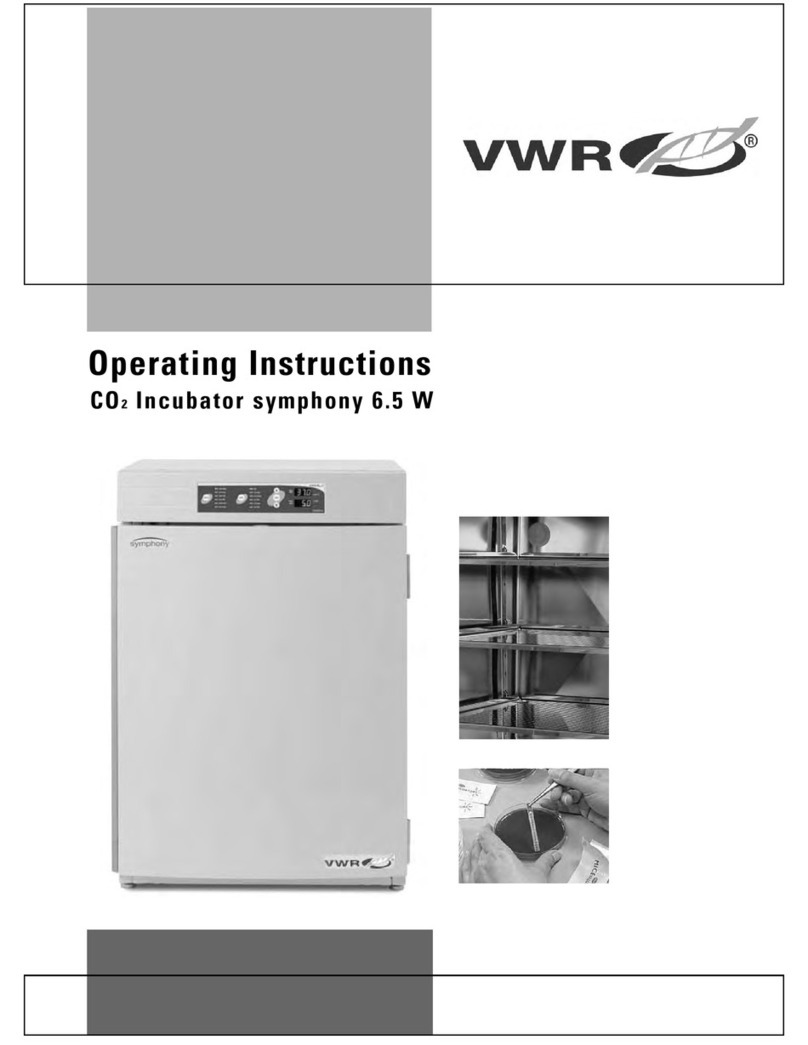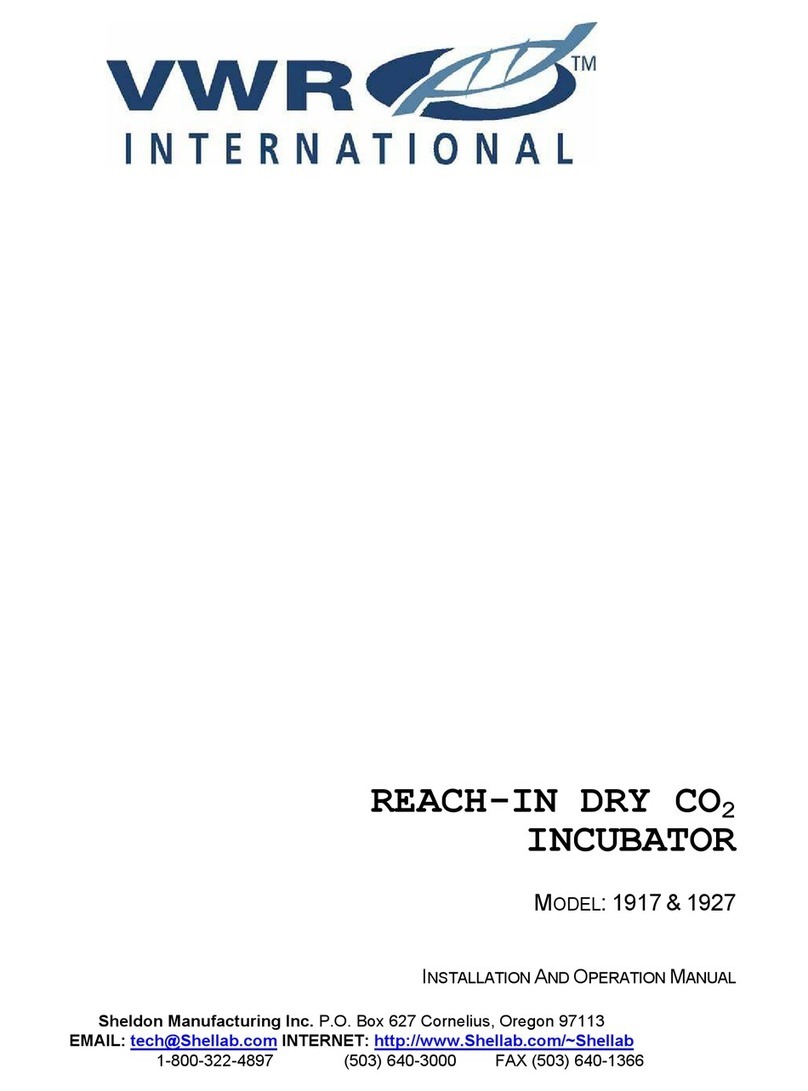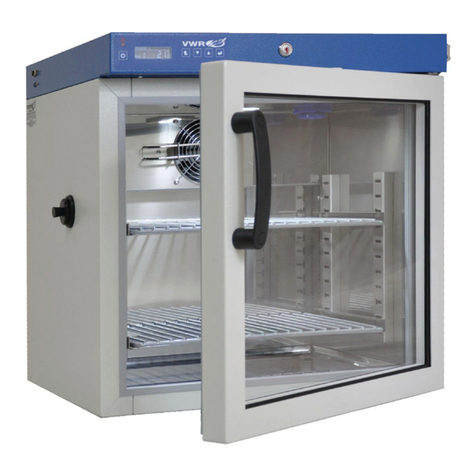
7
OPERATION
5.1 Check power supply against unit serial plate. They must match.
5.2 Plug service cord into the grounded electrical outlet.
5.3 Push the power switch to the On position, and turn the Safety Thermostat to its maximum
position, clockwise.
5.4 Installing Platform: The platform is positioned by enclosing all corners of the shaking
mechanism within the lips of the platform. This can be done easily by positioning the front two
corners then setting the rest of the tray down. The platform should be shaken by its handles after
placement to confirm that it is firmly in place.
5.5 Set Main Temperature Controller: Enter desired set point temperature. To enter set point mode
on the controller, press either the Up or Down arrow pad one time. The digital display will start to
blink, going from bright to dim. While blinking, the digital display is showing the set point. To
change the set point, use the Up and Down arrow pads. If the arrow pads are not pressed for five
(5) seconds, the display will stop blinking and will read the temperature of the unit. Note that the
High Limit Thermostat should be turned to its maximum position until the unit has stabilized at
desired set point temperature. Allow the incubator at least 5 hours to stabilize.
5.6 Calibration: It is recommended that calibration is done once the unit is installed in its working
environment and has been stabile at set point for several hours. Place a certified reference
thermometer in the chamber by placing it directly inside. Be certain the thermometer is not
touching platform. Allow the temperature to stabilize again until the thermometer reads a
constant value for one hour. Compare the digital display with the reference thermometer. If there
is an unacceptable difference, put the display into calibration mode by pressing both the Up and
Down arrow pads at the same time until the two outside decimal points begin to flash. While the
decimal points are flashing the display can be calibrated by pressing the Up or Down arrow pads
until the display reads the correct value. Allow the incubator temperature to stabilize again, and
recalibrate if necessary.
5.7 Set Over Temperature Protection Safety Thermostat: Once the incubator is stabile at the
desired set point, turn the Safety Thermostat counterclockwise just until the Safety indicator light
turns on. Next, turn the Safety Thermostat clockwise just until the safety indicator light turns off.
Then continue to turn clockwise an additional two small divisions on its scale past the point where
the indicator light went out. This will set the Safety Thermostat at approximately 1C above the
Main Temperature set point.
5.8 Set Oscillation Control: Enter set point mode by pushing and releasing either the UP or Down
arrow pad one time. The display will start to blink on and off showing the RPM set point. Pushing
the UP or DOWN arrow pad will increase or decrease the RPM set point in increments of 1 RPM.
The range for this set point is 30 –400 RPM. If the arrow pads are not pressed for five (5)
seconds the display will stop blinking and revert to displaying the actual RPM. The set point can
be set to 0.0.
Note that for shaker controls to work as described, the door must be completely closed.
There is a door switch that will stop the shaker if the door is opened.




































